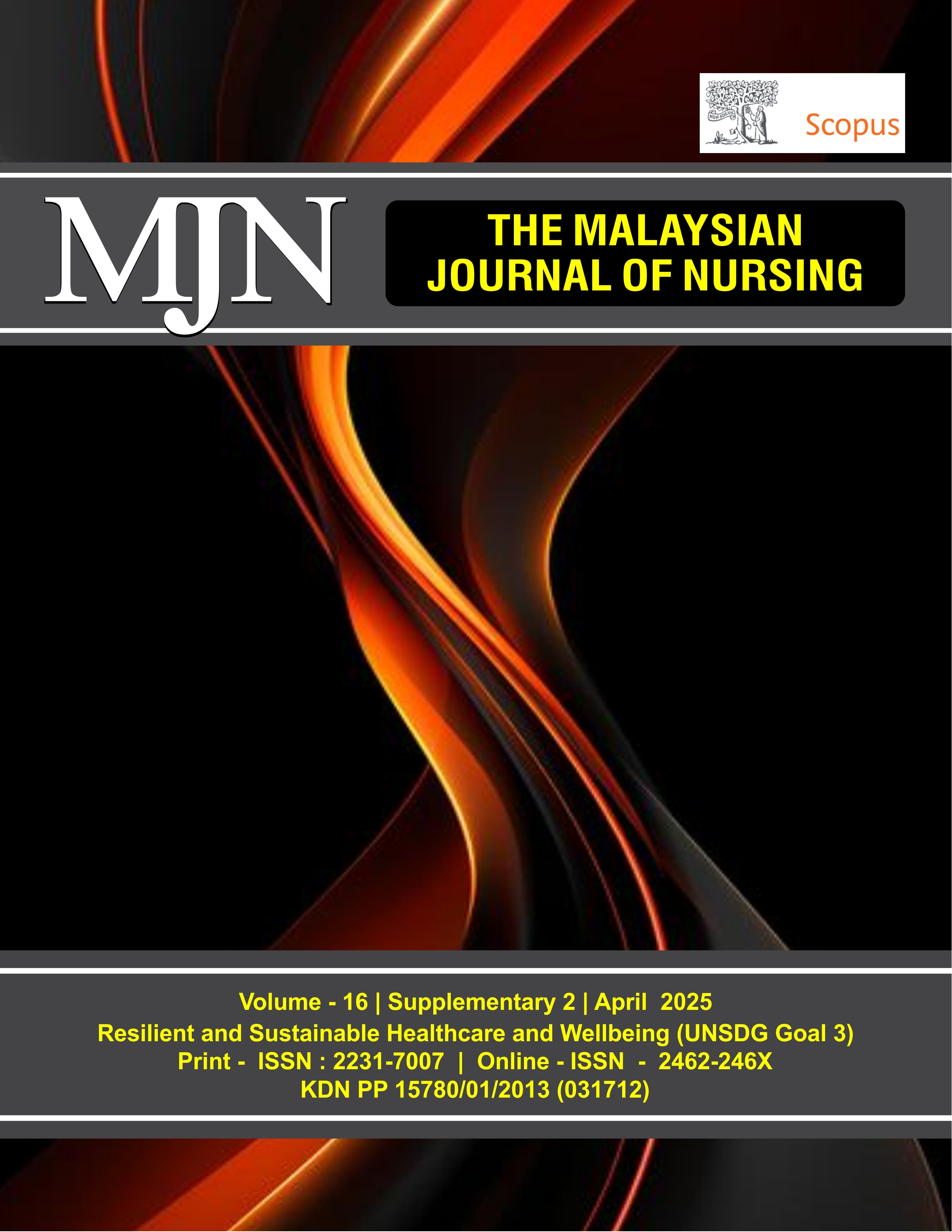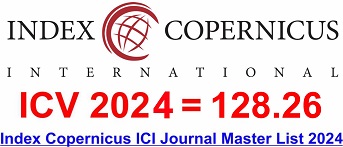Usability Assessment of the Patient Safety EduGame in Nursing Education
DOI:
https://doi.org/10.31674/mjn.2025.v16isupp2.010Abstract
Background: Patient safety is a critical component of nursing education, essential for equipping students with the skills to minimise errors and enhance healthcare outcomes. Traditional teaching methods often struggle to effectively engage students and connect theoretical knowledge with practical application. Educational games (EduGames) have emerged as promising tools to address these gaps by fostering interactive, engaging, and practical learning experiences. Objective: This study evaluates the usability of the Patient Safety EduGame as a tool to enhance patient safety education among nursing students. Methods: A descriptive cross-sectional study was conducted among 120 undergraduate nursing students at a university in Indonesia. After playing the Patient Safety EduGame, participants fill out the System Usability Scale (SUS) and the Usability Metric for User Experience (UMUX-LITE), two usability metrics for user experience. Descriptive statistics, one-way analysis of variance (ANOVA), Pearson correlation, and independent t-tests were used to examine the data in order to assess usability metrics and find differences among subgroups. Results: The mean Suspicious or Suspect (SUS) score was 78.5 (SD = 9.2) and the mean Usability Metric for User Experience UMUX-LITE score was 73.4 (SD = 10.1). Gender differences were significant for SUS scores (p = 0.04), with female participants reporting higher usability. Technological proficiency significantly influenced usability scores, with higher proficiency correlating with better scores (p < 0.05). A strong positive correlation (r = 0.78, p < 0.001) between SUS and UMUX-LITE scores confirmed convergent validity. Conclusion: The Patient Safety EduGame demonstrates high usability, making it a promising tool for integrating patient safety education into nursing curricula. Future research should explore the long-term educational impact and extend usability testing to broader populations.
Keywords:
EduGames, Gamified Learning, Patient Safety, System Usability Scale (SUS) , Usability Assessment, Usability Metric for User Experience (UMUX-LITE)Downloads
References
Aktaş, N. B., Şişman, B., & Borsci, S. (2025). Unleashing the potential of Turkish chatbots: A study on the validity and reliability of the bot usability scale. Universal Access in the Information Society. https://dx.doi.org/10.2139/ssrn.4487568.
Alshabib, A., Alakkas, N., & Hassine, J. (2025). A comparative study of heuristic evaluation and cognitive walkthrough: an e-government usability assessment case study. Arabian Journal for Science and Engineering, 50. https://doi.org/10.1007/s13369-025-09980-4 .
Antikchi, M., Heydari, S., & Bakhshi, F. (2025). The effect of game-based scenario writing on the clinical reasoning of internship nursing students in cardiovascular emergencies and critical care units. BMC Medical Education, 25(1). https://doi.org/10.1186/s12909-025-07079-w .
Baah, C., Govender, I., & Rontala Subramaniam, P. (2023). Exploring the role of gamification in motivating students to learn. Cogent Education, 10(1). https://doi.org/10.1080/2331186X.2023.2210045.
Berglund, A., Jaarsma, T., Orädd, H., Fallström, J., Strömberg, A., Klompstra, L., & Berglund, E. (2024). The application of a serious game framework to design and develop an exergame for patients with heart failure. JMIR Formative Research, 8. https://doi.org/10.2196/50063.
Brooke, J. (1996). SUS: A quick and dirty usability scale. In P. W. Jordan, B. Thomas, B. A. Weerdmeester, & A. L. McClelland (Eds.), Usability evaluation in industry (pp. 189-194). London: Taylor & Francis. Retrieved from: https://www.scirp.org/reference/referencespapers?referenceid=979187 . Accessed on 24th June 2024.
Daniel, S., Bishop, R., Killner, E., Whight, A., Lennard, S., Howard, S., ... & Shankar, R. (2025). Serious Games for constipation management for people with intellectual disabilities: A scoping review and narrative synthesis. International Journal of Medical Informatics, 196. https://doi.org/10.1016/j.ijmedinf.2025.105832.
Hussain, N., & Phulpoto, S. (2024). Digital Literacy: Empowering Individuals in the Digital Age. Assyfa Learning Journal, 2(2), 70–83. http://dx.doi.org/10.61650/alj.v2i2.231.
Jayadi, A., Ikawati, H. D., Abdurrahman, A., & Irawan, M. A. (2025). Digital literacy development strategy in higher education institutions. Jurnal Teknologi Pendidikan: Jurnal Penelitian dan Pengembangan Pembelajaran, 10(1), 30-37. http://dx.doi.org/10.33394/jtp.v10i1.13882.
Kalyuga, S., & Singh, A. (2020). Gamification in nursing education: Improving usability and learning outcomes. Nurse Education Today, 85(1). https://doi.org/10.1016/j.nedt.2019.104270 .
Kim, H. J., Oh, J., & Lee, S. (2024). Effect of virtual game-based integrated clinical practice simulation program on undergraduate nursing students' attitude toward learning. CIN: Computers, Informatics, Nursing, 42(3), 218–225. https://doi.org/10.1097/CIN.0000000000001105 .
Kim, J., Park, J. H., & Shin, S. (2020). Effectiveness of simulation-based nursing education depending on fidelity: A meta-analysis. BMC Medical Education, 16. https://doi.org/10.1186/s12909-016-0672-7 .
Korobkova, K. A., & Collins, P. (2019). The variety of user experiences: Literacy roles and stances on story‐sharing platforms. Journal of Adolescent & Adult Literacy, 62(4), 387-399. https://doi.org/10.1002/jaal.909 .
Lai, C. H., & Lin, C. Y. (2025). Analysis of learning behaviors and outcomes for students with different knowledge levels: A case study of Intelligent Tutoring System for Coding and Learning (ITS-CAL). Applied Sciences, 15. https://doi.org/10.3390/app15041922.
Lu, J., Schmidt, M., & Shin, J. (2025). Beyond Technological Usability: Exploratory Factor Analysis of the Comprehensive Assessment of Usability for Learning Technologies (CAUSLT) Scale. arXiv e-prints, USA. http://dx.doi.org/10.48550/arXiv.2501.18754 .
McLaughlin, S., Amir, H., Garrido, N., Turnbull, C., Rouncefield-Swales, A., Swadzba-Kwasny, M., & Morgan, K. (2024). Evaluating the impact of project-based learning in supporting students with the A-level chemistry curriculum in Northern Ireland. Journal of Chemical Education, 101(2), 537-546. https://doi.org/10.1021/acs.jchemed.3c01184.
Murmanto, I. R., Kamilia, R. M., Yusuf, G. M., & Kurniawan, R. (2022, December). User experience evaluation of It Support mobile application using System Usability Scale (SUS) and Retrospective Think Aloud (RTA). In 2022 Seventh International Conference on Informatics and Computing (ICIC)(pp. 01-08). IEEE. http://dx.doi.org/10.1109/ICIC56845.2022.10006974
Naamati-Schneider, L., & Alt, D. (2024). Beyond digital literacy: The era of AI-powered assistants and evolving user skills. Education and Information Technologies, 29, 21263-21293. https://doi.org/10.1007/s10639-024-12694-z.
Nylén-Eriksen, M., Stojiljkovic, M., Lillekroken, D., Lindeflaten, K., Hessevaagbakke, E., Flølo, T. N., ... & Tørris, C. (2025). Game-thinking; utilizing serious games and gamification in nursing education–a systematic review and meta-analysis. BMC Medical Education, 25. https://doi.org/10.1186/s12909-024-06531-7.
Sakdiah, G., Ahsyar, T. K., Megawati, M., & Angraini, A. (2025). User experience analysis of mypertamina application Using User Experience Questionnaire (UEQ) and System Usability Scale (SUS). Jurnal Sistem Cerdas, 8(1), 77-88. https://doi.org/10.37396/jsc.v8i1.486 .
Suhaemi, S., Nursanti, I., & Irawati, D. (2025). Effect of visual learning media and guidebooks on fluid restriction compliance among hemodialysis patients. Jurnal Keperawatan Komprehensif, 11(2), 280-287. http://dx.doi.org/10.33755/jkk.v11i2.815 .
Vlachogianni, P., & Tselios, N. (2023). Perceived usability evaluation of educational technology using the Post-Study System Usability Questionnaire (PSSUQ): A systematic review. Sustainability, 15(17). https://doi.org/10.3390/su151712954.
Wang, Y. F., Hsu, Y. F., Fang, K. T., & Kuo, L. T. (2024a). Gamification in medical education: identifying and prioritizing key elements through Delphi method. Medical Education Online, 29(1). https://doi.org/10.1080/10872981.2024.2302231.
Wang, L., Zhao, Q., Dong, L., Zhao, H., Qin, L., Deng, T., ... & Liu, J. (2024b). The effectiveness of serious games on undergraduate nursing students' knowledge and skills: A systematic review and meta-analysis. Nurse Education in Practice, 80. https://doi.org/10.1016/j.nepr.2024.104102.
World Health Organization (WHO). (2019). Process of translation and adaptation of instruments. Retrieved from: https://www.who.int. Accessed on 24th June 2024.
Zhang, Q. (2025). The role of EFL teacher immediacy and teacher-student rapport in boosting motivation to learn and academic mindsets in online education. Learning and Motivation, 89. https://doi.org/10.1016/j.lmot.2024.102092.
Published
How to Cite
Issue
Section
License
Copyright (c) 2025 The Malaysian Journal of Nursing (MJN)

This work is licensed under a Creative Commons Attribution-NonCommercial-NoDerivatives 4.0 International License.



































